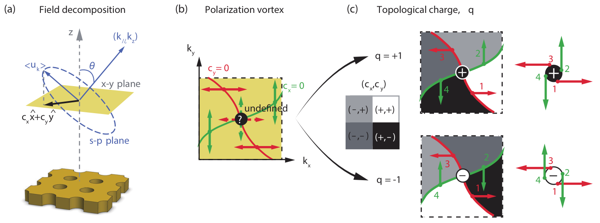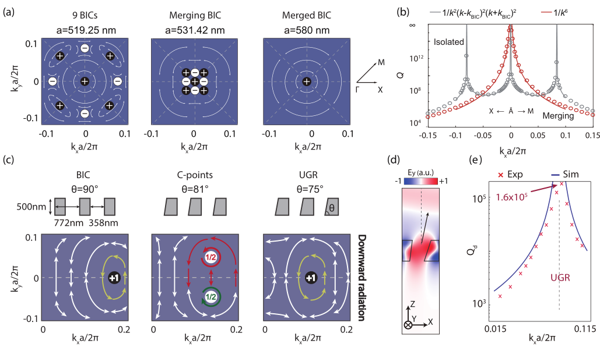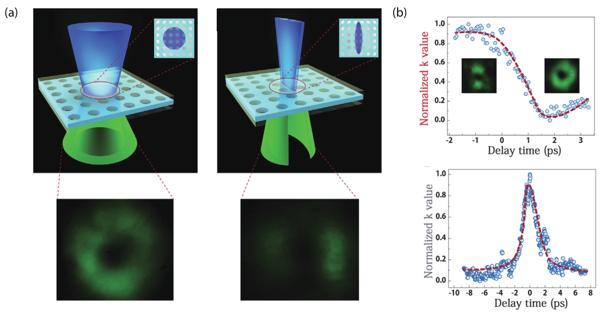Photonics integration is a burgeoning field from both academic and industrial points of view because of its great potentials in aggregating photonic technology with high-performance integrated circuits that may revolutionarily change the architecture of computing. However, many photonics integration platforms suffer from huge challenges in robustness, which make device fabrication, assembling and packaging not compatible with massive production and large-scale integration. To this end, topological concepts are applied and successfully clarified many extraordinary phenomena and further promoted the performance of many devices, as a result, spawn a new branch of modern optics – topological photonics.
Topology deals with conserved quantities that do not change when the system is continuously deformed. Topological ideas are applied in designing and optimizing a series of optoelectronic system. As a specific example of radiation manipulation, researchers studied the non-Hermitian photonic systems from the viewpoint of topology, and found out that several special energy states can be depicted by a class of topological invariants – topological charges. Further, researchers investigated the physics behind it, and proposed topological methodology to manipulate radiation characteristics that give rise to many novel optoelectronic applications, such as photonic crystal microcavity with ultra-high Q factors, guided resonances with unidirectional radiation, and vortex beam generator with ultra-fast switching time. These progresses show that, topology is not only mathematical convenience, but also reality in physics and will boost the applications of photonics integration in many aspects.
The invited review article published in Photonics Research, Vol. 8, No. 11, 2020 (Xuefan Yin, Chao Peng. Manipulating light radiation from a topological perspective[J]. Photonics Research, 2020, 8(11): 11000B25),which was chosen as On the Cover of Topological Photonics and Beyond , provides a comprehensive overview on the milestones as well as the latest progresses in the field of photonic devices based on topological concepts, particularly for radiation manipulation.
1. Background of topological photonics
As a branch of mathematics, topology engages in physics during the discovery of integer quantum Hall effect (IQHE). In this case, quantized Hall conductance was found to be the consequence of a class of topological invariant—TKNN invariant. IQHE as well as the topological invariants boosted the emergence of topological insulators in condensed matter. In these systems, the geometric properties of bulk wave functions can be described by a certain type of topological invariant, while the relationship between edge states and bulk bands is constrained by so-called bulk-boundary-correspondence accordingly.
In 2008, researchers proved that topological phases of matter are ubiquitous in a wide range of wave systems. After, topological ideas were expanded to various wave systems, in particular, the photonic system. As a classical counterpart of quantum systems, photonic systems enjoy the benefits of flexibility and diversity, thus become an ideal platform for explore topological ideas and principle. Therefore, topological photonics was born.
However, compared to electron in condensed matter, there are some unique characteristics of photon. Most importantly, photons are non-conserved particles with finite lifetime in most realistic photonic devices, subjecting to a variety of non-equilibrium processes. It indicates that most photonic systems are non-Hermitian in nature. As a result, conventional topological theory that is developed for Hermitian system needs to be revisited.
2. Topology in non-Hermitian photonic systems
Since photons escaping is inevitable in realistic devices, non-Hermitian photonic systems and the topology in them has been hot spotted. The researchers are devoted in finding new topological invariants and the bulk-boundary correspondence to depict non-Hermitian systems. On the other hand, the radiation had been paid particular attention since it is a major source for photonic devices exchanging energy with the surroundings. Some unique photonic states have been discovered, such as bound states in continuum (BICs), exceptional points (EPs) and etc., which connect to the topology of radiation field and being described by topological charges. Such concept reveals new perspectives of investigating non-Hermitian photonic systems: we can observe the geometric characteristics of radiation field to probe and explore the intrinsic topological phases underlying, or manipulate the radiation for practical usage through tuning the topological charges.

Fig. 1 (a) Schematic of radiation from photonic crystal slab. (b) Polarization vortex in momentum space. (c) Schematic of topological charges
3. Research progresses in radiation manipulation from topological concepts
For a long time, numerical optimization is a well-established method in photonic device design, however, it usually suffers from the huge computation cost and the risk of falling into local optima. Topological optimization provides a new and complementary method since it offers a global picture for optimization. For instance, because the BICs correspond to integer topological charges in radiation field that imply zero radiation, it is reasonable to manipulate the evolution of topological charges in momentum space to flexibly close and open radiation channels as will, and achieve desired radiation behaviors.
In the first example, researchers merge multiple topological charges towards Brillouin zone center, thus modify the scaling rule of quality factors that make the resonances nearby robust to random scatterings. In the second example, researchers break the symmetries of photonic crystal, which splits and restores the topological charge at a single side of the device, eventually construct a class of unidirectional radiative resonance without mirror on the other side.

Fig. 2 (a) Topological charges evolution for merging BICs. (b) Scaling rules of quality factors for isolated BICs and merging BICs. (c) Topological charges evolution for Unidirectional Guided Resonances (UGRs). (d) Profile of electric field component of UGR. (e) Experimental and simulated results of downward quality factors around UGR.
In addition to open and close radiation channels, other merits of light wave fronts, such as polarization and phase can also be tailored from topological charges. For example, researchers annihilate and restore the topological charge by modulating the gain profile, and successfully demonstrate an on-chip vortex micro-laser that support ultra-fast switching between vortex beam and linearly polarized beam dynamically, in a switching time as short as 1~1.5ps.

Fig.3 (a) Dynamic control of output beam based on manipulating the optical gain profile. (b) Top: Transition from a donut beam to a linearly-polarized beam. Bottom: Transition from a donut beam to two-lobe beam and back within picosecond-scale transition time.
4. Summary and outlook
As a young and burgeoning field of photonic research, topological photonics is experiencing exciting progress and breakthroughs, and leading to new devices and application in photonics. Topology is not just abstract mathematical theory but reality in physics. We are expecting the findings from topological concepts could broaden the horizon of science, and boost many applications in photonic integration, quantum computing and others.


